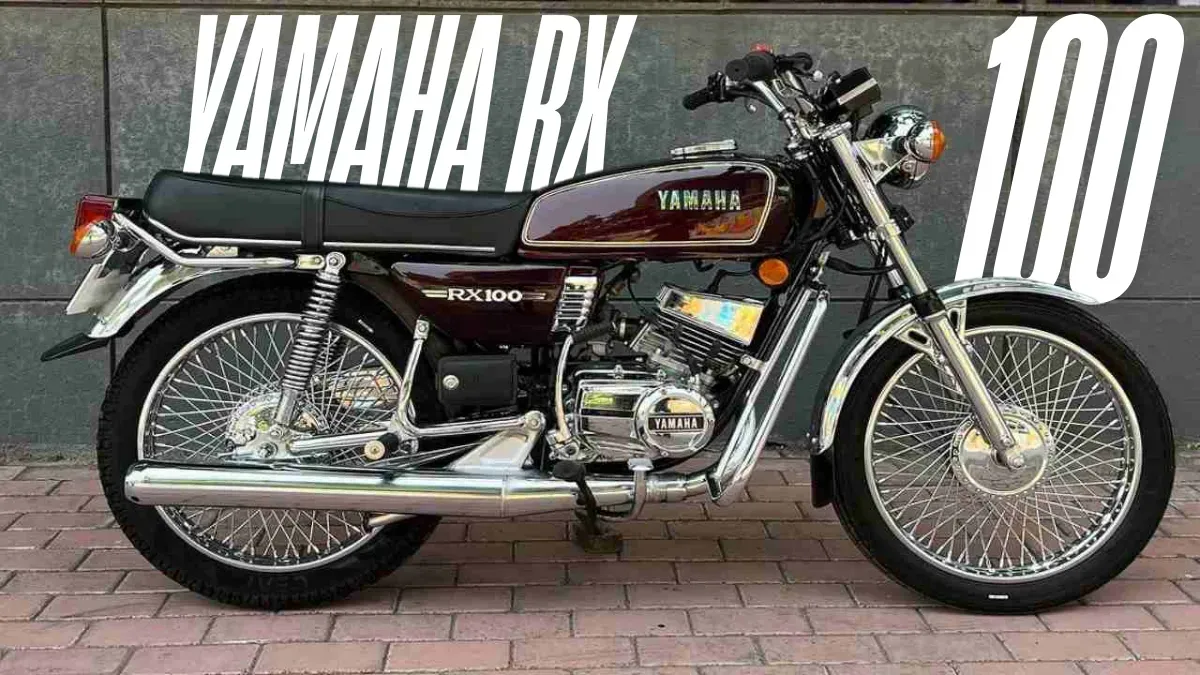The Yamaha RX 100 isn’t just a motorcycle — it’s an emotion. First introduced in India in 1985, the RX 100 quickly became a cultural icon thanks to its raw two-stroke performance, lightweight build, and distinct exhaust note. Even decades after it was discontinued, it continues to have a cult following across the country.
With growing speculation around Yamaha possibly reviving the RX 100 nameplate, enthusiasts and new-gen riders alike are buzzing with excitement. Let’s dive into a detailed review of what made the RX 100 so special, and what a modern version could look like if Yamaha brings it back.
Original RX 100: The Birth of a Legend
The original Yamaha RX 100 was known for its unmatched combination of agility, performance, and reliability in the two-stroke era. It gained popularity across age groups and regions, from city riders to racers and even police departments.
Key Highlights of the Original RX 100:
- Engine: 98cc, 2-stroke, single-cylinder
- Power Output: 11 bhp @ 7500 RPM
- Torque: 10.4 Nm @ 6500 RPM
- Top Speed: ~100 km/h
- Transmission: 4-speed manual
- Weight: 103 kg (kerb)
What set the RX 100 apart was its sharp throttle response, strong mid-range punch, and ability to out-accelerate much larger bikes. It had a simple yet muscular design, crisp chrome accents, and the iconic round headlamp that gave it a retro charm.
Why It Was Loved: Performance and Sound
The RX 100 became synonymous with its distinctive exhaust note — a high-pitched, raspy 2-stroke sound that turned heads from blocks away. Riders loved the explosive power delivery, especially in second and third gear, making it perfect for short city sprints and drag races alike.
Its lightweight made it extremely flickable in traffic, and unlike many 4-stroke bikes of its time, it delivered an exhilarating riding experience without compromising durability.
Will the RX 100 Come Back? What Can We Expect in a Modern Version?
With increasing demand for retro-modern motorcycles, Yamaha has hinted at bringing back the RX 100 nameplate. However, due to modern emissions norms, the new RX 100 will not be a 2-stroke. Instead, it may be powered by a 125cc or 150cc 4-stroke engine, possibly sharing a platform with the Yamaha R15 or FZ series.
Expected Features in a Modern RX 100:
- Engine: 125–150cc air-cooled, fuel-injected 4-stroke engine
- Power Output: Around 12–15 bhp
- Transmission: 5-speed gearbox
- Design: Retro-inspired body with round headlamp, teardrop fuel tank
- Lighting: Full LED setup with classic indicators
- Instrument Cluster: Semi-digital or retro analog
- Brakes: Front disc, rear drum (ABS standard)
- Mileage: Approx. 45–55 km/l
A new RX 100 would aim to retain the classic appeal of the original while conforming to BS6/BS7 emission norms, fuel efficiency standards, and rider safety requirements.
What Riders Expect from the New RX 100
Enthusiasts hope that the new RX 100 will not just be a cosmetic remake, but a performance-oriented lightweight motorcycle with:
- Agile handling
- Quick throttle response
- Upright, comfortable seating
- Minimalistic and muscular looks
- Affordable pricing (likely under ₹1.5 lakh)
Yamaha has a legacy to honor, so expectations are sky-high.
Pros and Cons of the Original RX 100
| Pros | Cons |
|---|---|
| Instant throttle and punchy mid-range | High emissions (2-stroke) |
| Lightweight and agile handling | Low fuel efficiency |
| Iconic design and exhaust note | Outdated brakes and suspension by today’s standards |
| Easy to repair and maintain | Discontinued; parts now rare |
Final Verdict: Nostalgia Meets Possibility
The Yamaha RX 100 was more than just a commuter — it was a symbol of freedom, speed, and style for an entire generation. If Yamaha can successfully blend modern technology with the spirit of the original, the RX 100 revival could dominate the lightweight performance segment once again.
Whether you’re a seasoned rider who once owned one, or a young biker curious about the legend, one thing is certain: the RX 100’s legacy is ready to roar again — in a cleaner, meaner form.







